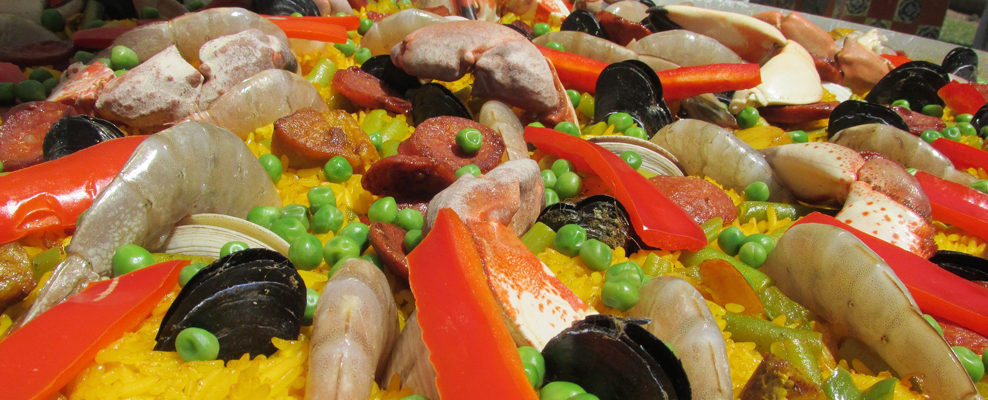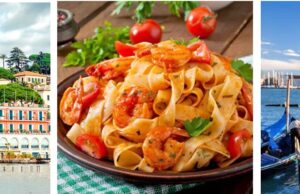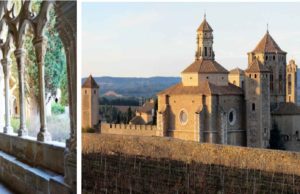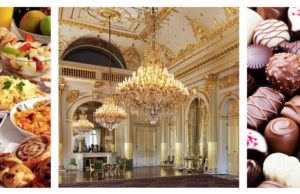
WoT's Hot
Want to throw a party? Why not try a one-dish Paella Party? But you want to have A BIG, BIG, BIG PARTY?
Wish to try the party-model given below?
Just get the following ingredients:- 6,000 kg Rice
- 12,000 kg Chicken and Rabbit
- 5,000 kg of veggies
- 1,100 liters of Olive Oil
- 250 kg of Salt, and, just
- 16 kg Saffron, plus
- 13,000 liters of Water
You will also need 30,000 kg of Wood and Coal to cook the Paella in a steel pan measuring 21 meters in diameter which is 26 cm deep.
It would be helpful if you had the support of the City Hall, the Fire Brigade and the Police. Just to be on the safe side, you may have the Army standing ready to march in, if needed.
Since you wanted a really BIGG PARTY, you can invite up to 110,000 friends. You will have enough Paella to feed all these friends!
All the above is not just a flight of fancy or imaginative fiction. This was the largest Paella ever cooked. It was cooked in Madrid, Spain, in October, 2001.
If a bigger Paella has been cooked since, somewhere else, I do not know. But this Paella is enough of a peg on which to base our walk through the Life and Times of the Paella, one of the most globally popular rice dishes and a true symbol of tradition- pride-passion-color-warmth-hospitality of Spain.
What does “Paella” mean and where does the word come from? This question too has multiple answers. PAELLA means both the typical flat pan used for cooking, and the rice preparation cooked in this pan. There are various theories about the origins of the word. One school of thought says that it comes from the Latin word ‘patella’ meaning ‘pan’, and it is thus that the Valencian word ‘paella’ – which also means ‘pan’ – is derived. Another segment of people believe that ‘paella’ is rooted in the Arabic word ‘baqiyah’, meaning ‘leftovers’. The argument goes that originally Paella was a poor man’s dish made with leftover food. A romantic but rather hilarious third version states that the dish was first cooked a man for his fiancée and it is rooted in the Spanish ‘por ella’ – ‘for her’! True or false, I like the third alternative, just because so much passion is aroused when the discussion veers towards the Paella of Valencia and Paella in general.

Today, there are as many dishes laying claims to be ‘Paella’ as there are stars in the skies. Admittedly, some Paellas I tasted in Madrid, Barcelona, Seville – and even in Valencia – were grand presentations, short neither on taste, looks or pocket-pinch, but they were definitely not the Real McCoy. These ‘beauties’ overwhelmed you with a superabundance of seafood, meats and whatnot, were definitely great feasts to the eye, but they were NOT quite Paella. The soul was missing.
Paella is a rice dish. The ‘soul’ resides in the Rice and NOT in attractive-looking – maybe even good-tasting – add-ons. A Wise One declares: “Rice is the protagonist of Paella….It’s all about packing as much flavor into the rice as possible, without compromising the integrity of the individual grains.” Other rice varieties may individually have better looks or taste, but an absolute essential for the rice used for making good Paella is its ability to absorb the maximum amount of moisture carrying the goodness of taste. It is this absorbed moisture which is the nectar which makes Paella heavenly.
Rice. When and where did it come from? What is universally accepted is that it is the ‘grass’ which grew wild and was domesticated in India or China, long, long ago. In Spain, Rice was brought by either the Arab traders in the 5th/6th century, or by the Moors when they conquered Spain in the 8th century. During the almost 800 years of Moorish occupation of Spain, Rice gained much popularity as a staple.
Paella Valenciana, is the ‘Original Paella’ and is named after Valencia, the city around which it originated in the 18th (16th?) century. From here, the disputes start, regarding the ingredients and lots more. So all the information which follows is the ‘middle path’. The only matter which has no scope for dispute at all is the fact that an authentic Paella Valenciana is a Rare, Life-sustaining, Life-affirming, Life-exalting, Extremely Soul-satisfying Culinary Experience. And, it has to be made with Calsparra rice called Bomba – a medium round grain which can absorb moisture upto three times its weight.
The basic ingredients of the Original Paella Valenciana were – Rice, Tomatoes, local Beans and Snails. The Snails gave it a flavor of thyme on which they fed. Rabbit, Duck and Chicken were also added. Saffron was a key ingredient for its exotic flavor. Many authentic Paella places still stick to these ingredients for their Paella Valenciana. This was a lunch time communal dish, cooked over an open fire, and enjoyed by laborers and workers from the pan itself, using wooden spoons.
Because Valencia has good supply of seafood nearby, a Seafood Paella also evolved using Shrimp, Lobster, Clams, Cuttlefish, Mussels, Crayfish and more. The other famous Paella which evolved was the Paella Mixta, which is a freestyle mix of Seafood, Meats and Vegetables. Then there is the Black Seafood Paella where squid ink is used to color the dish black.
Whatever kind of Paella may be made, the Basic Pillars remain the same. There is the traditional-wide, round and shallow pan in which the cooking is done. The rice should be the Bomba. The heat source – wood fire preferred – should be such that the whole pan is accommodated and even heat is applied. The Sofrito, the flavor-base is a sauté of aromatics differs from cook to cook and may have tomatoes, onion, garlic, fresh herbs and peppers. The desired ingredients like Chicken, Rabbit, Duck, Snails, Vegetables, and Saffron. The Cooking Liquid and Olive Oil. The Patience and the Skill of the Cook. The wait for the rice to be cooked just right, ensuring a good thin layer of ‘Socarrat’ – the burnt rice at the pan-bottom. After following these Pillars of Paella Wisdom, what do you get? A great Explosion of Flavorful Taste and Satisfaction.
The Best Paella in Spain (the World)? Try Restaurant Levante in Benisano, 30 kilometers east from Valencia. This family-run restaurant started serving Paella in 1970. Five years later, they were serving Paella to the King of Spain. After the Paella meal, Vidal, the owner of the restaurant asked: “Your Majesty, did you enjoy the Paella?” “Yes. Why do you ask?” “Because me and my family are the ones who made it.” “Well you have a deft touch.” This restaurant still serves the Paella of Royalty. A Paella you may not find anywhere else.
Do remember: “All Paella is Rice. But not all Rice is Paella.”
Save SaveWant to throw a party? Why not try a one-dish Paella Party? But you want to have A BIG, BIG, BIG PARTY?
Wish to try the party-model given below?
Just get the following ingredients:- 6,000 kg Rice Read More
What to read next
Featured articles

Welcome Festive Season in Glam, Latin Quarters Launches new #PujoBling Collection with Monami Ghosh
by WOT













































